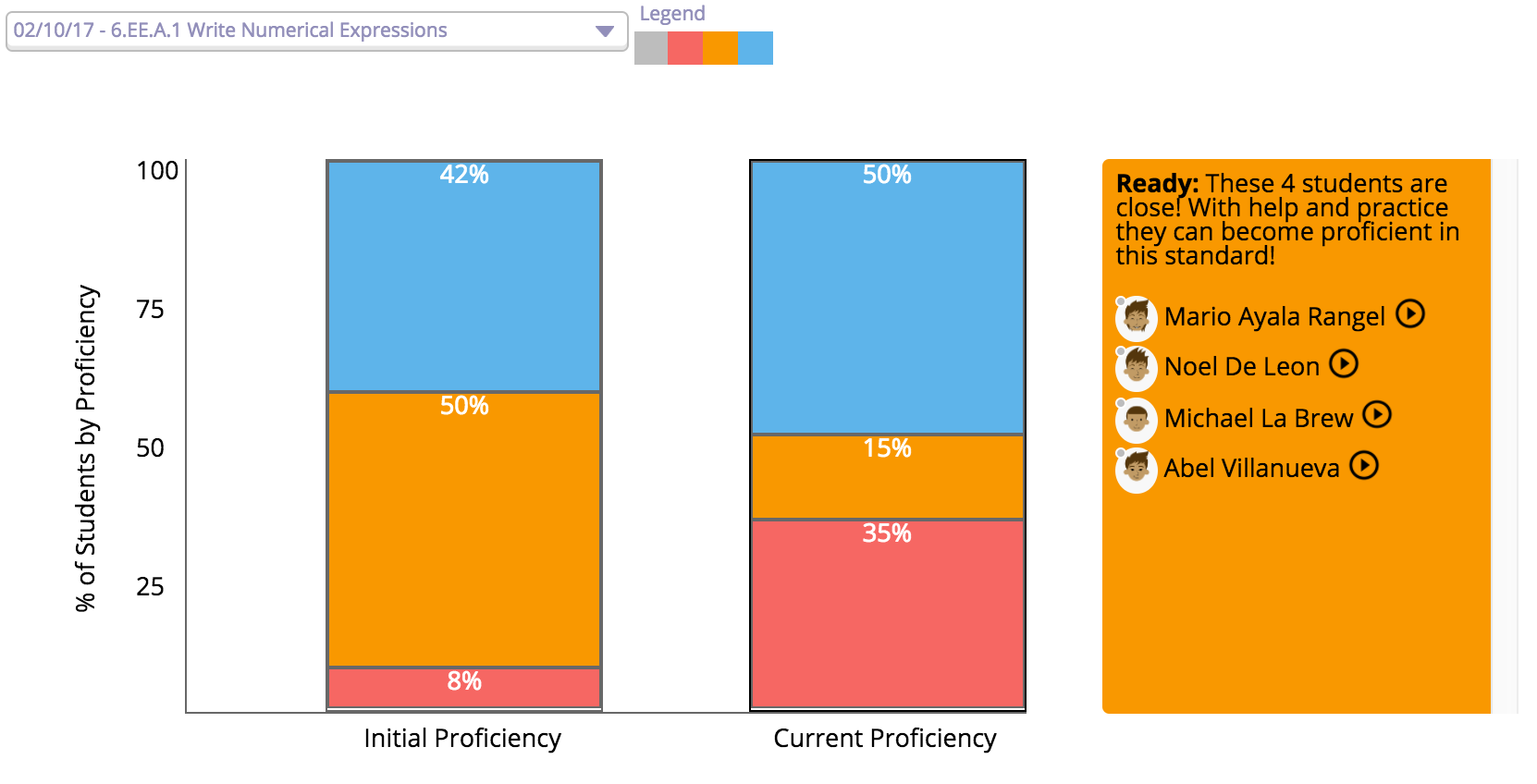John Danner, CEO of the online math tutoring tool Zeal, sees interoperability as a problem for edtech, but doesn’t believe there is a good solution. “The solution that’s been proposed is to roll up data from all systems and present it in a dashboard. Because the data isn’t well-aligned, it’s a ‘garbage in, garbage out’ problem,” he says. What Danner means: if the data is inaccurate or inconsistent when it’s entered, then it would be difficult for educators or anyone to derive useful insights.
Prior to starting Zeal, which claims to serve 25,000 students each week, Danner was the co-founder and CEO of Rocketship Education, a technology-rich charter management organization based in northern California. That experience allows him to speak from the perspective of both practitioner and entrepreneur. And he knows firsthand how administrators and product developers both struggle with making data portable and actionable.
At Rocketship, teachers used a variety of digital math and reading tools to provide individualized instruction for students in computer labs everyday. Danner’s experience taught him that building a grand, unified dashboard that combines data from multiple programs has its obstacles. Interpretations of learning standards across different educational tools are inconsistent; each program may define success differently. The criteria by which a student has “mastered” a topic may be different for Zeal, DreamBox Learning, ST Math or any number of math programs.
At Zeal, the general belief is that data is most impactful when it is in the hands of teachers in the most simplified format. Danner says, “If they see it and understand it, they can act on it.”
Protecting Teachers’ Time through Clever Integration
Zeal’s interoperability efforts can be segmented into importing and exporting data. For Zeal, importing refers to the rostering and login processes for teachers, which include entering student information, setting up and managing class accounts and helping students get started using the tool on a device.
Danner has witnessed many teachers spend too much time setting up student accounts and helping them manage passwords. This is a poor use of valuable instruction time. “I’d rather see teachers spending their time working with students than manually entering data,” he explains. The problem is compounded when students move from one class to another, which happens frequently through the school year.
One way that Zeal has addressed this issue is by integrating with Clever, an edtech company that syncs with a district’s student information system (SIS) to automate student login and rostering processes. This way, rostering data is automatically updated for teachers and the tools they use.
For schools that don’t use Clever, teachers must manually enter all student data, or send Zeal a CSV file. And every time there’s a change in the class roster, they must manually make the change or notify the company.
Helping Teachers Take Action
Danner also knows that some administrators want the flexibility to move all student data in and out of the different tools in their digital learning environments—not just names and rosters. Ideally, they want to see all of a student’s data (administrative, usage and performance) from different tools in one place. The convenience of a single dashboard can give administrators better insights into what products are working (or not) and can inform educators about which students need support, or are ready to move ahead.
However, Danner isn’t convinced that investing time and money on untangling the web of knots that prevent student achievement data from being passed between tools will positively impact learning outcomes. Improving data sharing between tools will make operations more efficient for administrators, but he believes that it will not increase the effectiveness of instruction.
For Danner, there’s a more fundamental issue that must be addressed before access: building a culture and habit of looking at data—and doing something with it. Unless teachers look at data and take action, it doesn’t matter whether the data is in one place or in many different places. Danner believes that helping teachers develop habits for using data is more valuable than helping administrators collect data in one place.
The company’s best method to help teachers use data to take action is figuring out how to present the right information quickly and clearly. Zeal currently offers a teacher dashboard that displays student progress on assigned standards, highlighting students below grade level and showing which pre-skills to focus on. This information helps teachers identify student readiness for specific skills and make decisions about what to teach next and whether whole or small group instruction makes the most sense.
Though Zeal isn’t currently focusing on data sharing, Danner isn’t opposed to supporting other methods of exporting student data if customers express a real need. Zeal has already developed a custom API to help schools and districts export data from the tool, but only a dozen or so use it.

Alpha Public Schools, a charter school network based in San Jose, Calif. uses the API to import the three basic data types (usage, proficiency and growth data) into Tableau, a tool that helps users visualize and analyze data. Alpha’s use case is not common. In Danner’s view, just because a district has access to student data with a product does not mean that teachers will use it to change or improve instruction. Until that’s the case, the company does not plan to invest significant time or resources in improving these efforts.
What’s Up Next
Instead of interoperability, Danner wants to focus on using data in other ways. For example, he is curious how much Zeal impacts student growth on assessments such as NWEA MAP and Smarter Balanced. The company is currently working with Empirical Education and KIPP Los Angeles to conduct a validation study over the course of one semester. Empirical Education is looking for meaningful correlations between Zeal’s raw usage data, KIPP LA’s student rosters and NWEA MAP scores. ”We want to figure out what growth we caused on metrics our users trust.” That being said, Danner says educators should be wary of using performance data from Zeal, or any other edtech program, as a substitute for rigorous assessment data.
Danner believes that if they can prove that student achievement in Zeal is predictive of student achievement on these tests, then district administrators might actually use the data to make changes to teaching and learning throughout the year, which is his endgame.
In the meantime, Zeal will continue to focus on new ways to help teachers use achievement data to improve student learning offline. “Teachers are the only ones who can make something of the data,” says Danner. “They’re the only ones who matter.”
This profile is from an EdSurge Research series on interoperability. It is part of a larger collaboration called Project Unicorn led by InnovateEDU in partnership with EdSurge, the Michael & Susan Dell Foundation, Getting Smart, and Common Sense Media. These stories are made publicly available with support from InnovateEDU.
This work is licensed under a Creative Commons Attribution-NonCommercial-NoDerivatives 4.0 International License.



